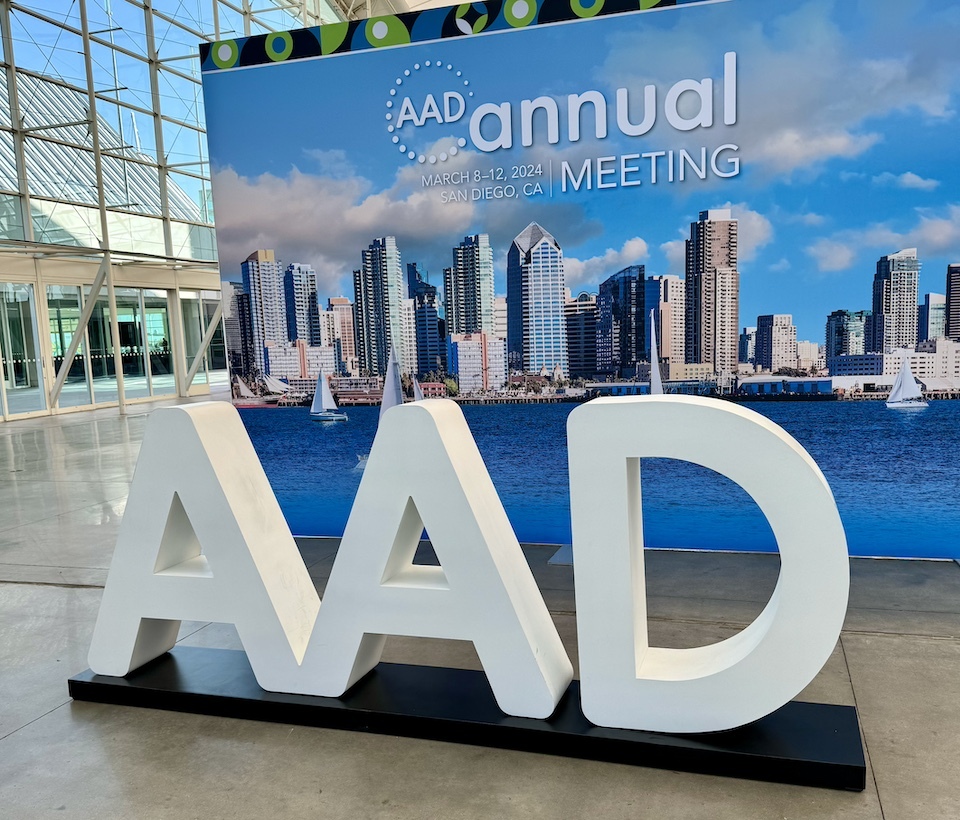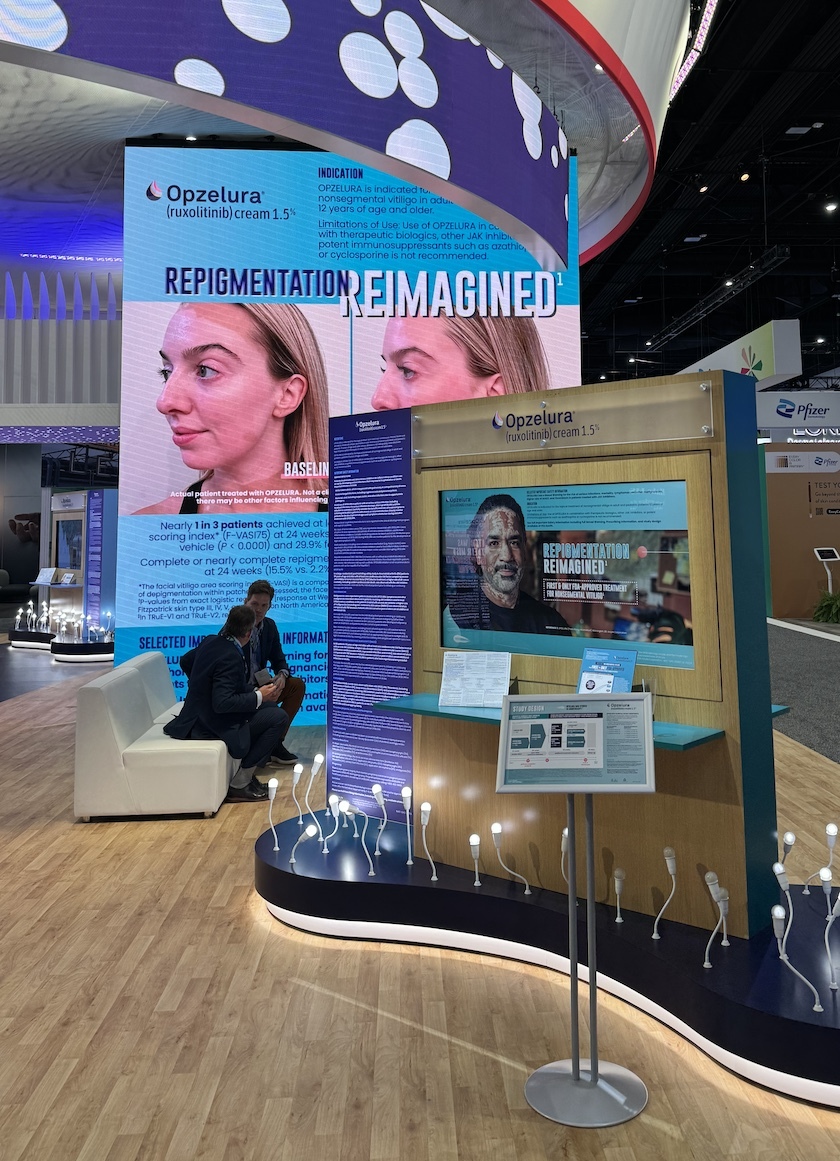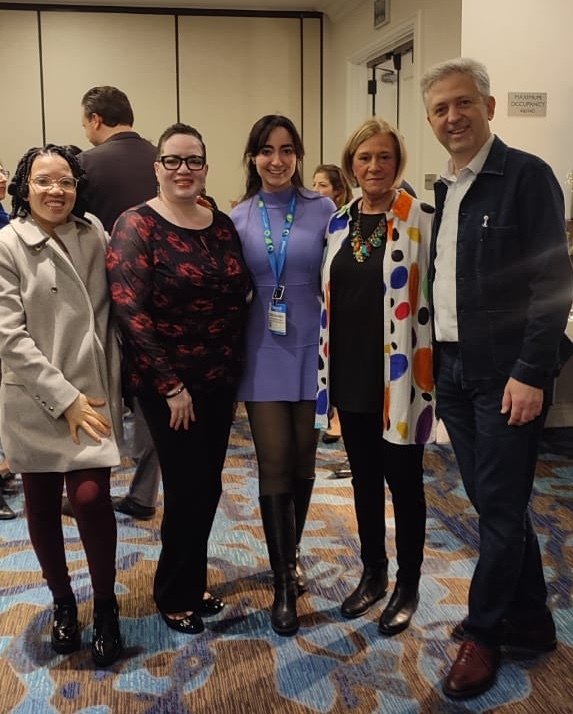New
After the enlightening IMCAS congress in Paris, it's time to dive into the vitiligo ventures on this side of the Atlantic. Landed in San Diego for the AAD 2024 Congress, and it's Vitiligo City! Everywhere you look, "See What’s Possible" banners featuring vitiligo models are catching eyes – on buses, walls, and even on our Instagram.
Prof. Richard Spritz once shared a pearl of wisdom about the essence of these congregations - they're where you meet your "future old friends." And indeed, the AAD's agenda is brimming with opportunities for just that, boasting 7 meetings with a spotlight on vitiligo.
The session S030 Vitiligo not to be missed kicks off on Saturday, March 9, from 9:00 AM to 12:00 PM, featuring a constellation of esteemed speakers such as Seemal R. Desai, Nada Elbuluk, Khaled Ezzedine, Pearl E. Grimes, Justin Hall, Iltefat H. Hamzavi, Richard Huggins, Tasneem Mohammad, Thierry Passeron, all under the watchful eye of Prof. John Harris.
If you're unable to grace the event with your presence, fret not. In a nutshell, the recent advancements in vitiligo treatment mark a significant leap forward in the management of this long-stigmatized skin condition, which has been documented since the Bronze Age. Historically treated with natural remedies, vitiligo therapy has seen little innovation until recently. The disorder, affecting roughly 1% of people worldwide without gender bias, often impacts patients' psychosocial well-being more profoundly than their physical health.
A groundbreaking moment came with the FDA's 2022 approval of topical ruxolitinib, a JAK inhibitor, for nonsegmental vitiligo in individuals 12 years and older. This approval represented a pivotal shift from previous treatments, offering hope for repigmentation and a more normal skin appearance. Ruxolitinib, previously approved for atopic dermatitis, has demonstrated significant efficacy, particularly on facial vitiligo, with manageable side effects.
The development of topical JAK inhibitors for vitiligo treatment highlights a novel approach that may surpass traditional therapies like steroids, calcineurin inhibitors, and phototherapy in effectiveness. Currently, additional oral JAK inhibitors are undergoing clinical trials, potentially expanding the treatment arsenal.
Research into IL-15 inhibition aims to address the challenge of vitiligo relapse by targeting resident memory T cells responsible for the disease's persistence even after therapy cessation. This approach could herald a new era in vitiligo management, focusing on sustained remission.
Despite these advancements, established therapies like phototherapy remain crucial due to their proven efficacy over millennia. The integration of new treatments with traditional methods and even dietary changes promises a comprehensive approach to vitiligo management, offering new hope to those affected by this visible yet often overlooked condition.




FAQOther Questions
- Can a gluten-free diet help with vitiligo?
It's very unlikely. We have specifically looked into claims that gluten-free diet may ease symptoms of vitiligo, or completely reverse it, and found no firm scientific evidence ...
- Isn't it just a cosmetic disorder?
Contrary to popular belief, vitiligo is not merely a cosmetic issue but a complex autoimmune disorder that affects the body’s largest organ—along with other vital systems—and is...
- PTSD in Vitiligo?
Living with vitiligo often involves more than managing visible skin changes. Many individuals face discrimination, social stigma, and feelings of isolation, leading to emotional...
Though it is not always easy to treat vitiligo, there is much to be gained by clearly understanding the diagnosis, the future implications, treatment options and their outcomes.
Many people deal with vitiligo while remaining in the public eye, maintaining a positive outlook, and having a successful career.
Copyright (C) Bodolóczki JúliaBy taking a little time to fill in the anonymous questionnaire, you can help researchers better understand and fight vitiligo.
